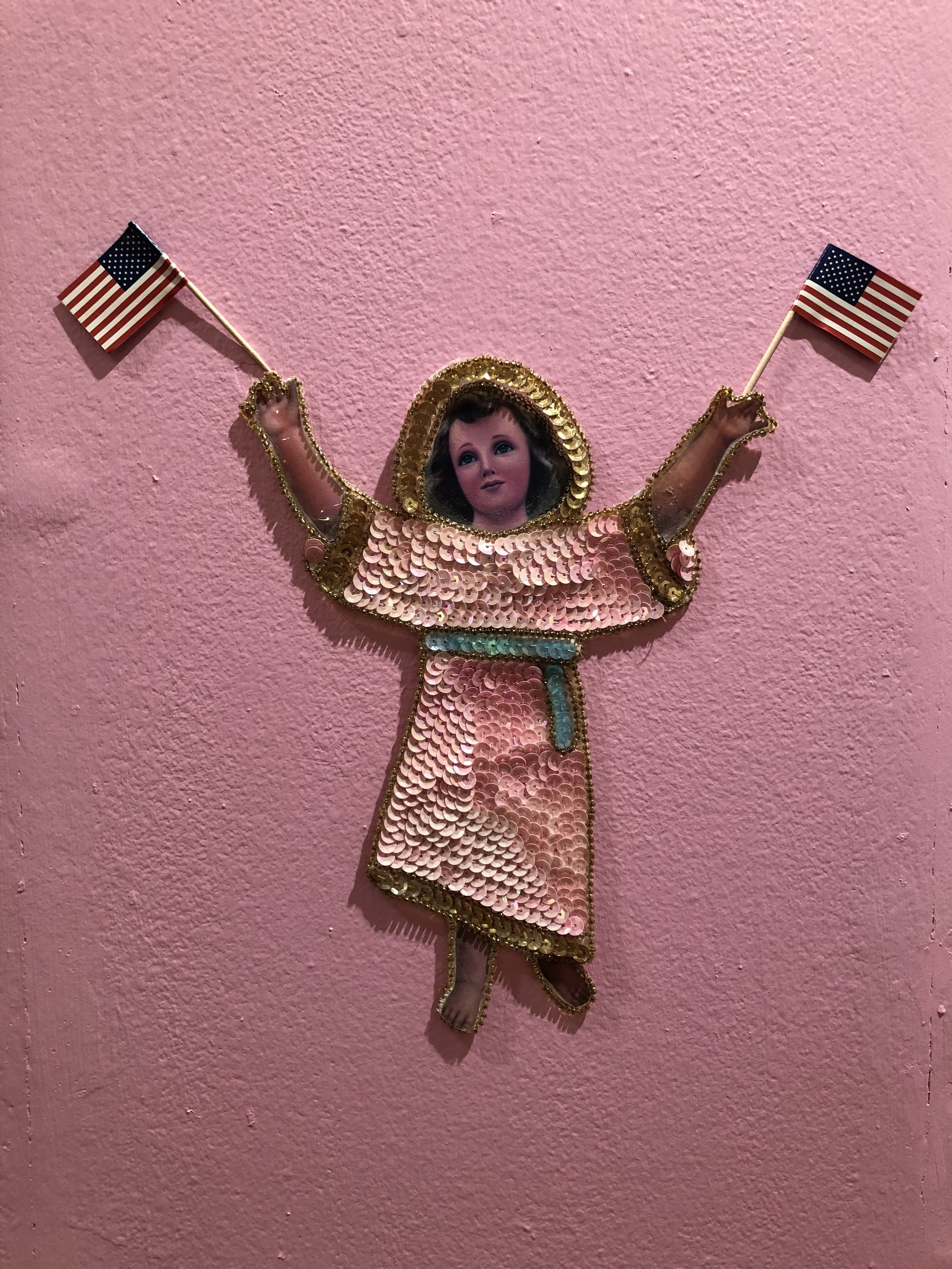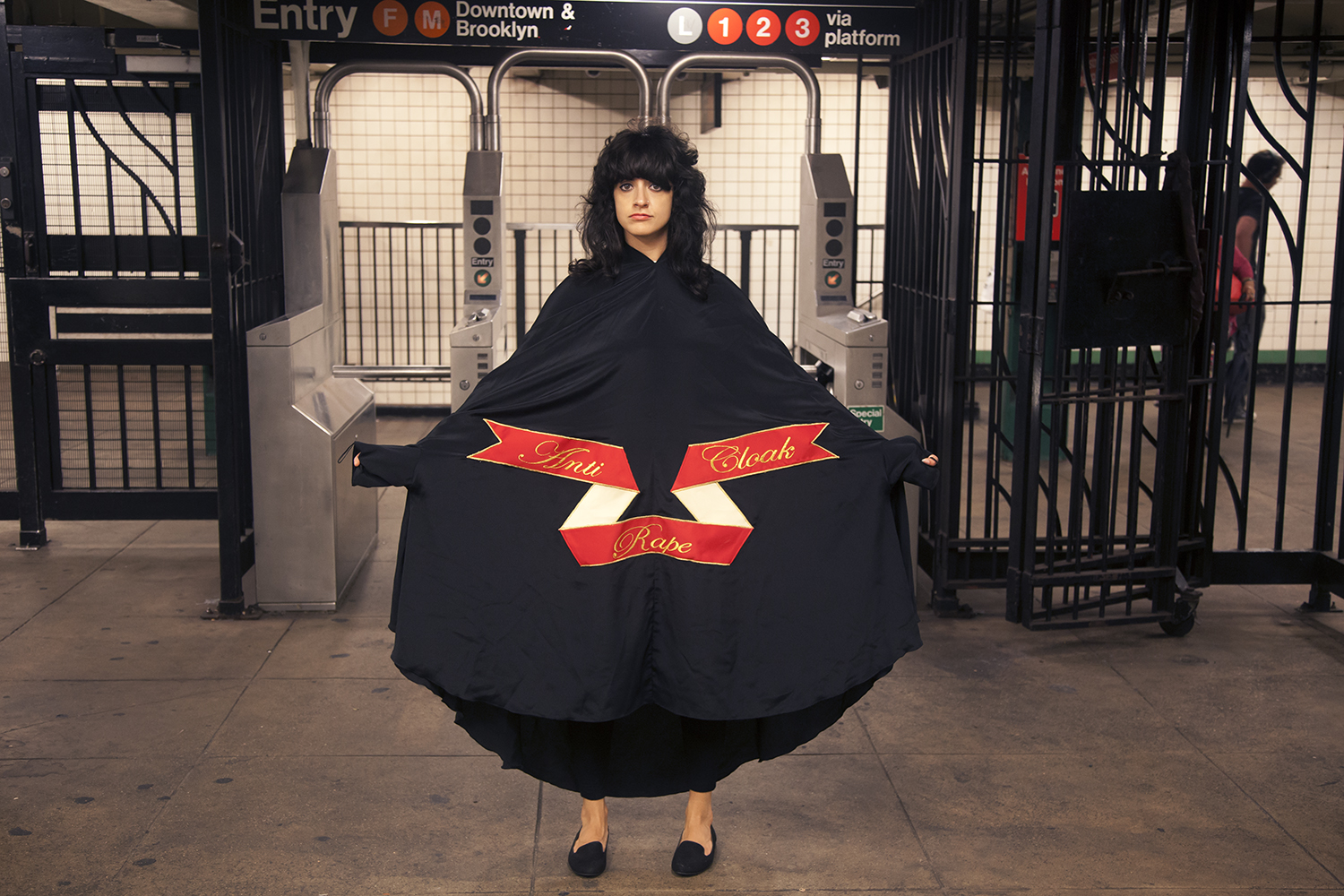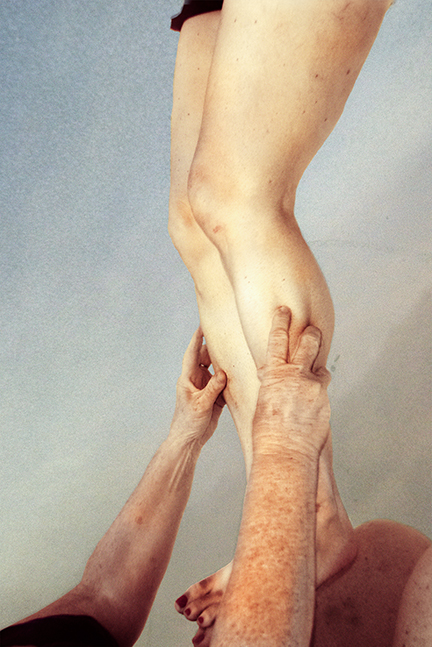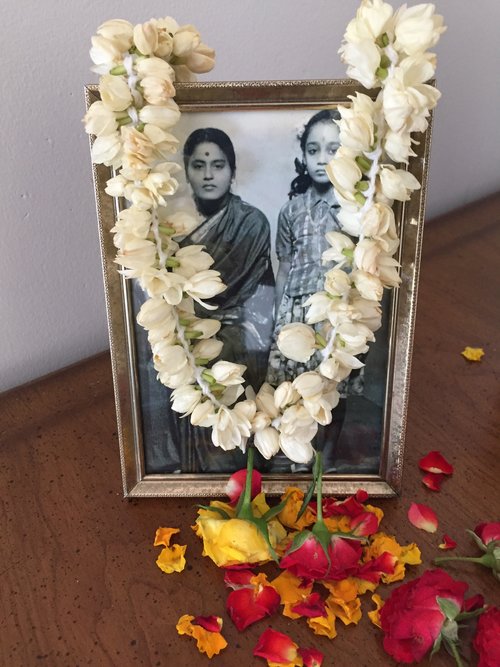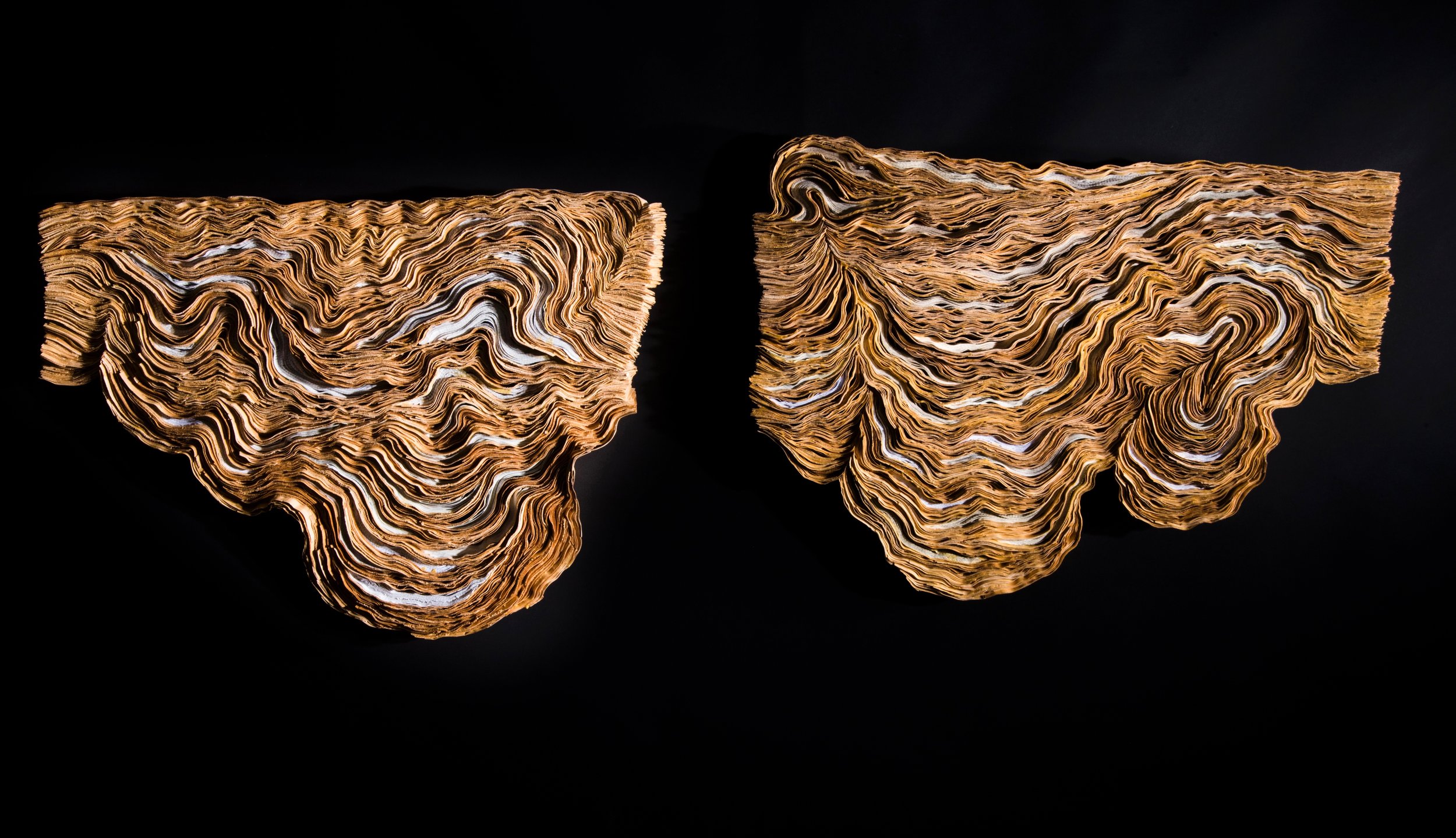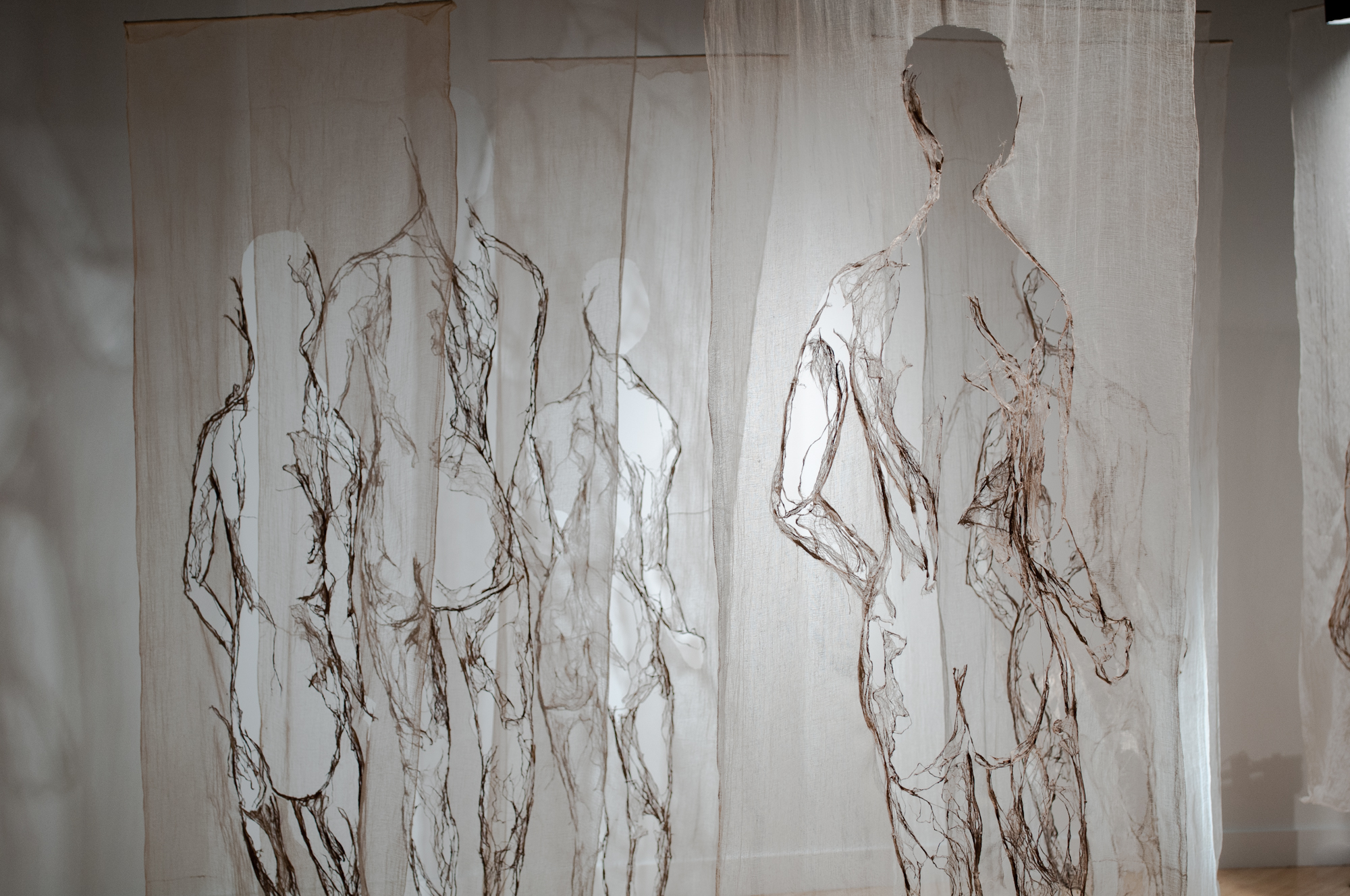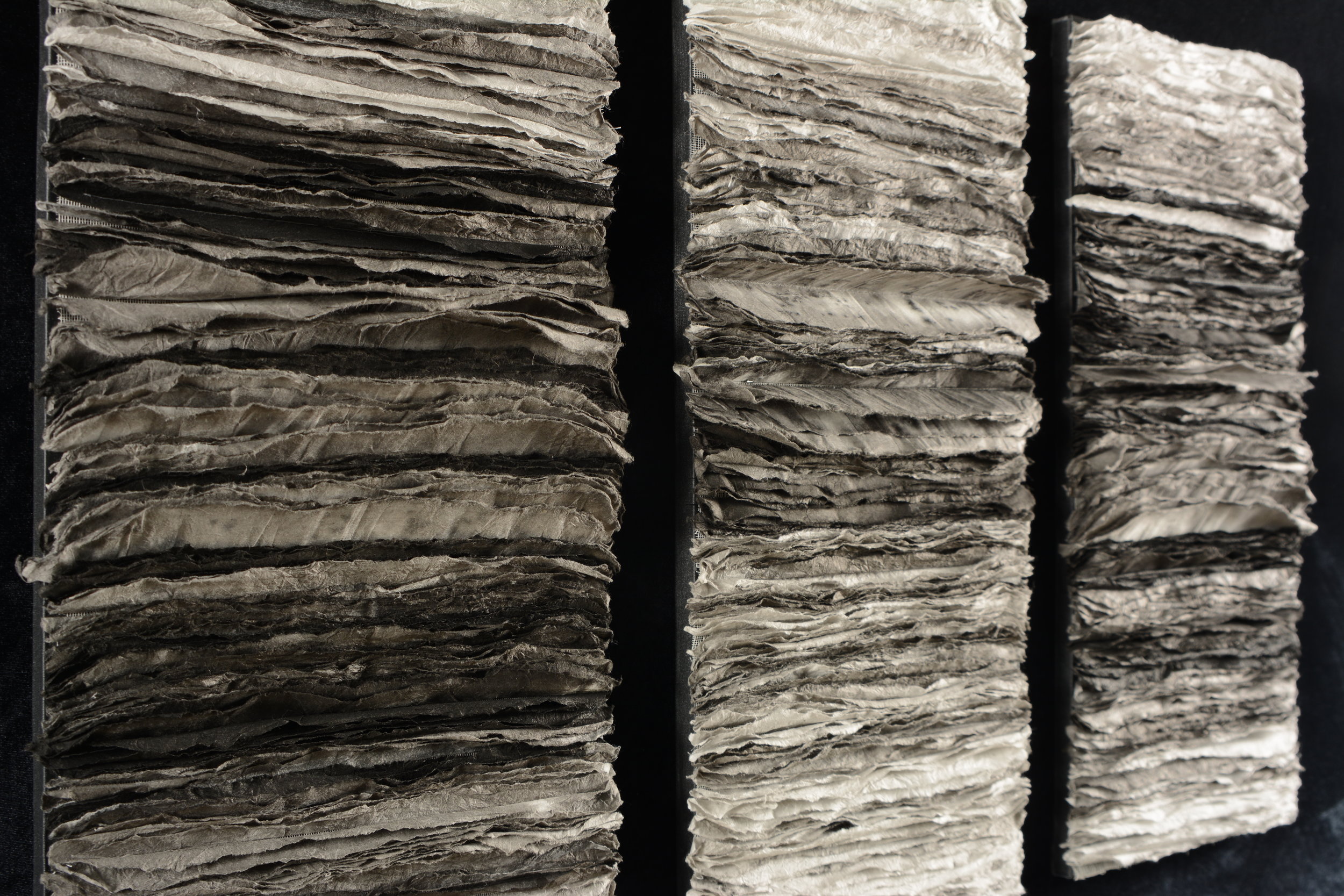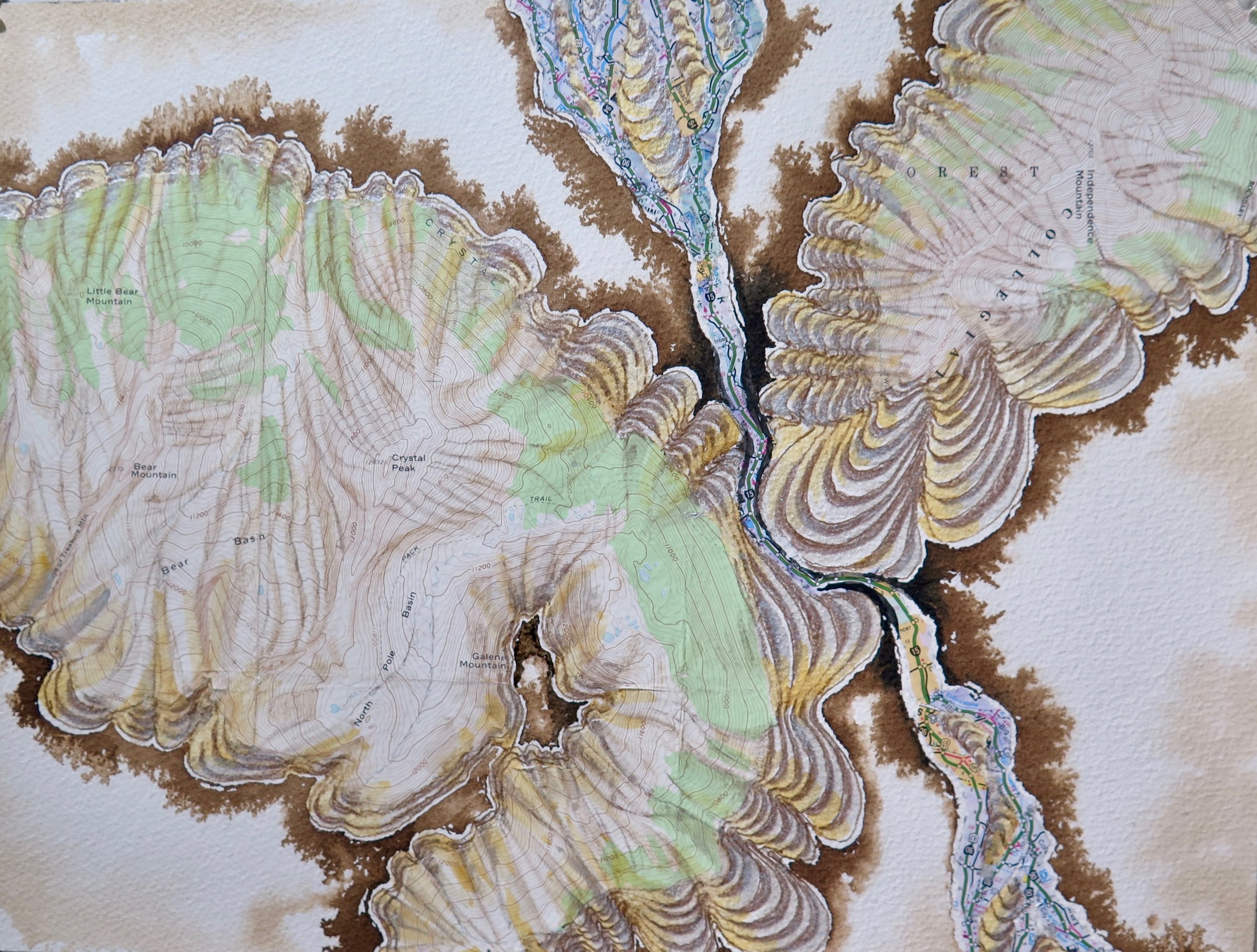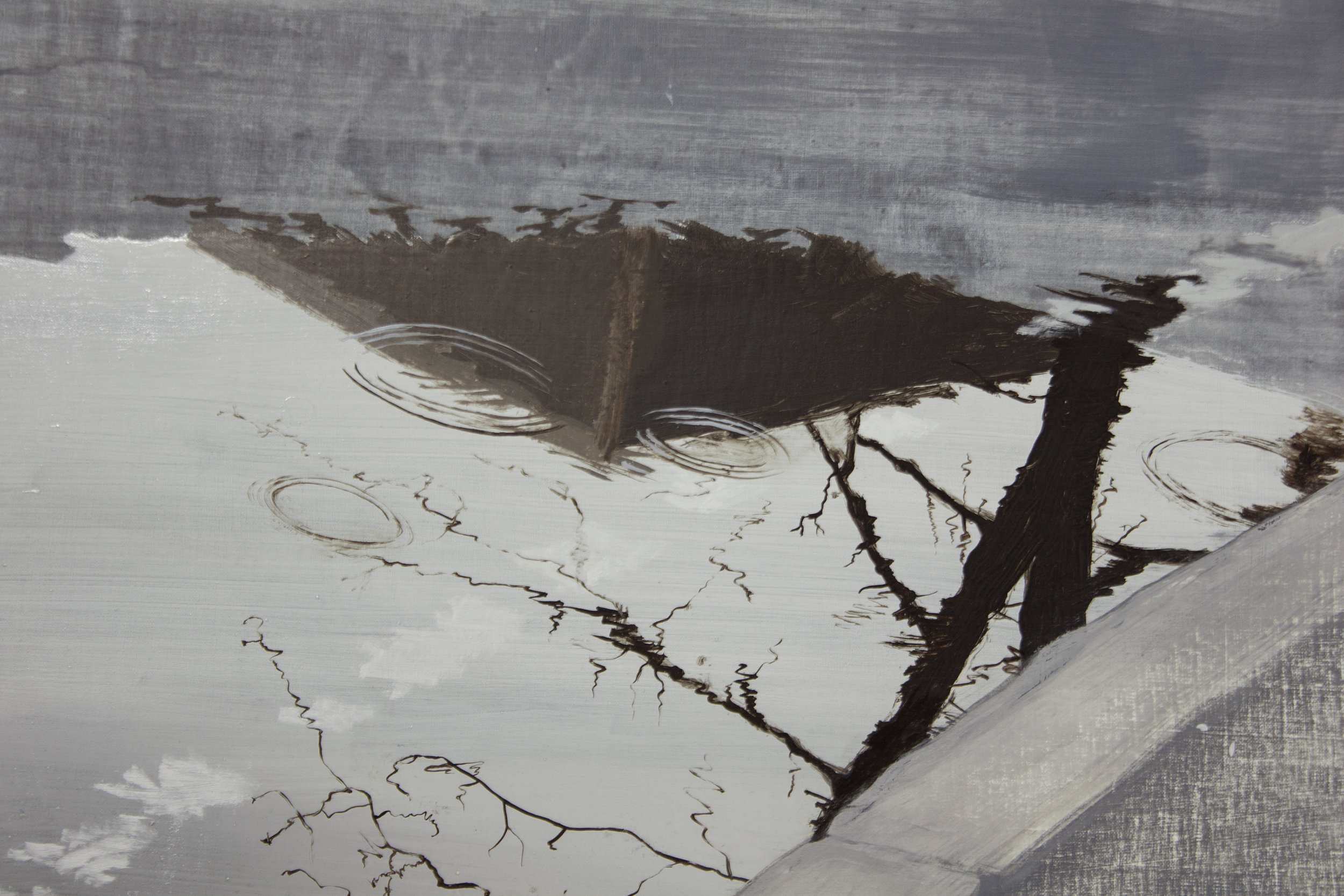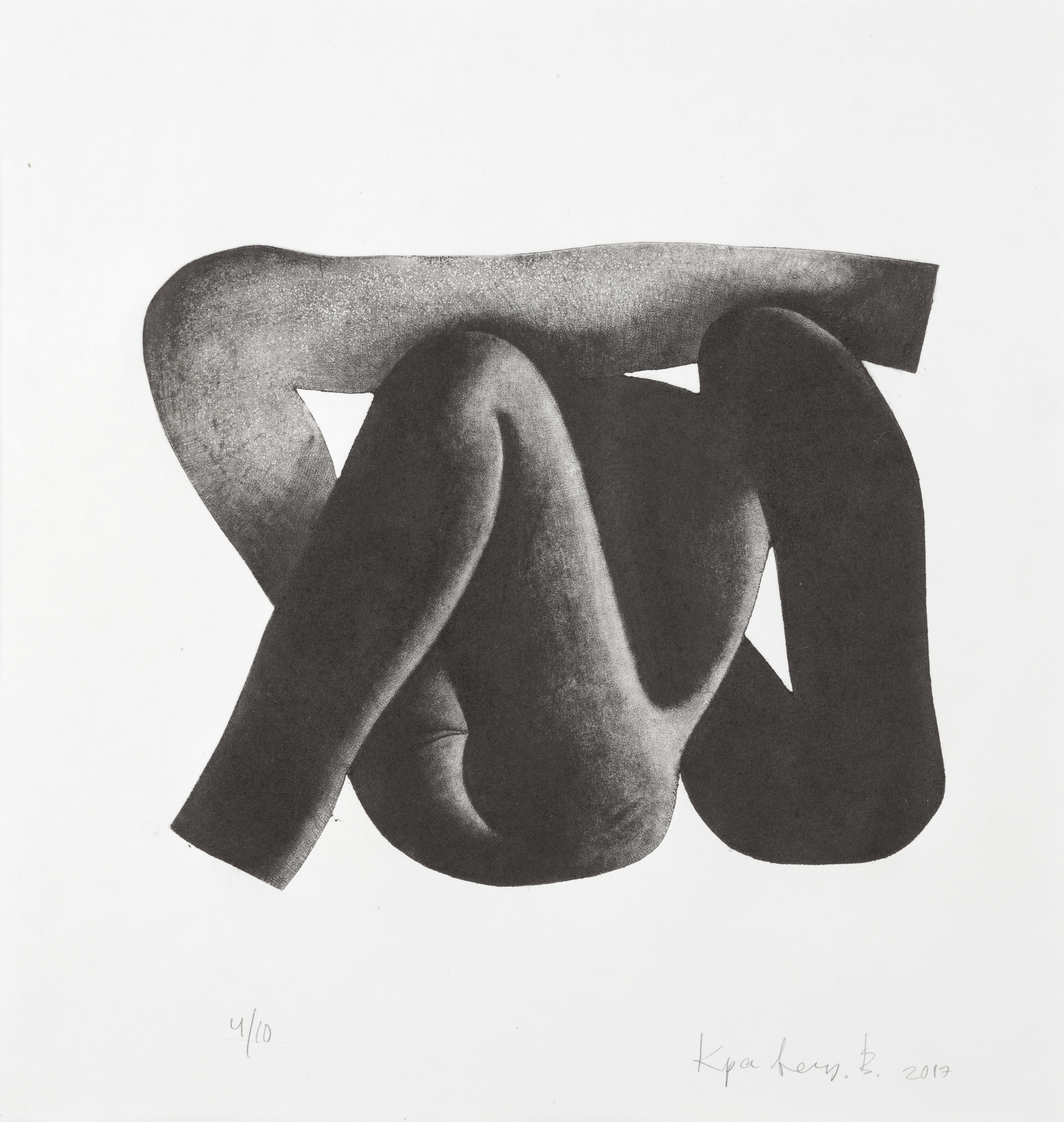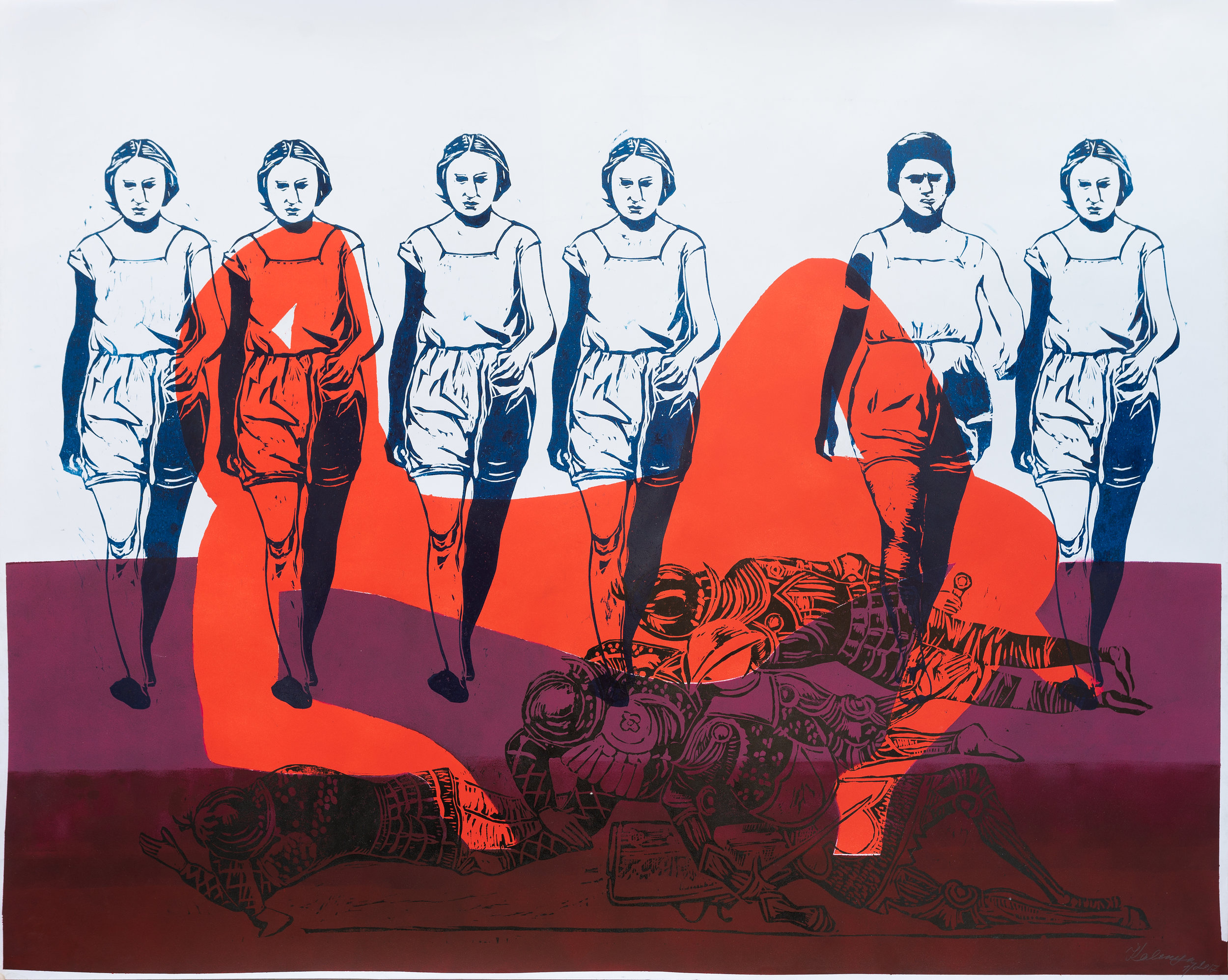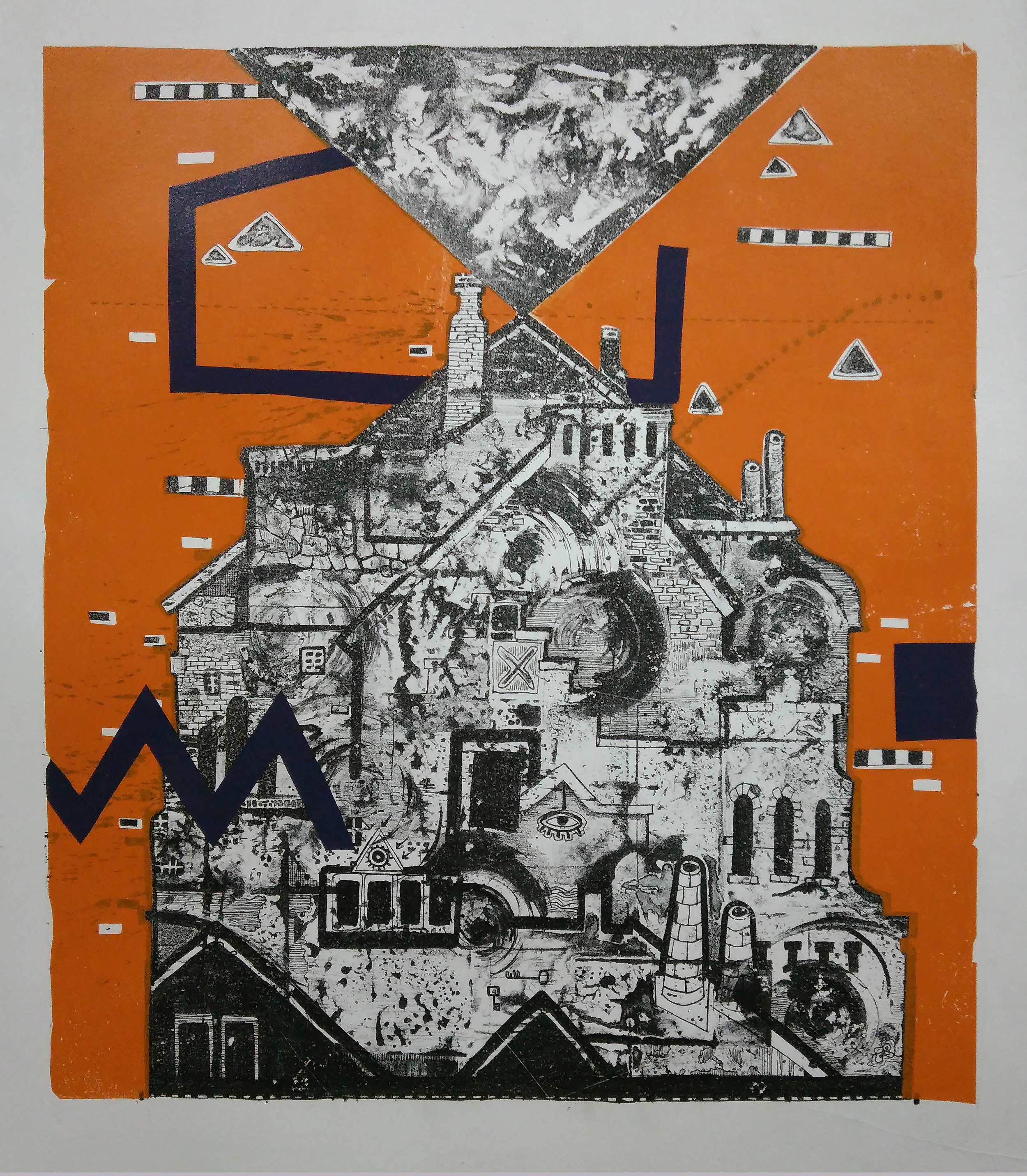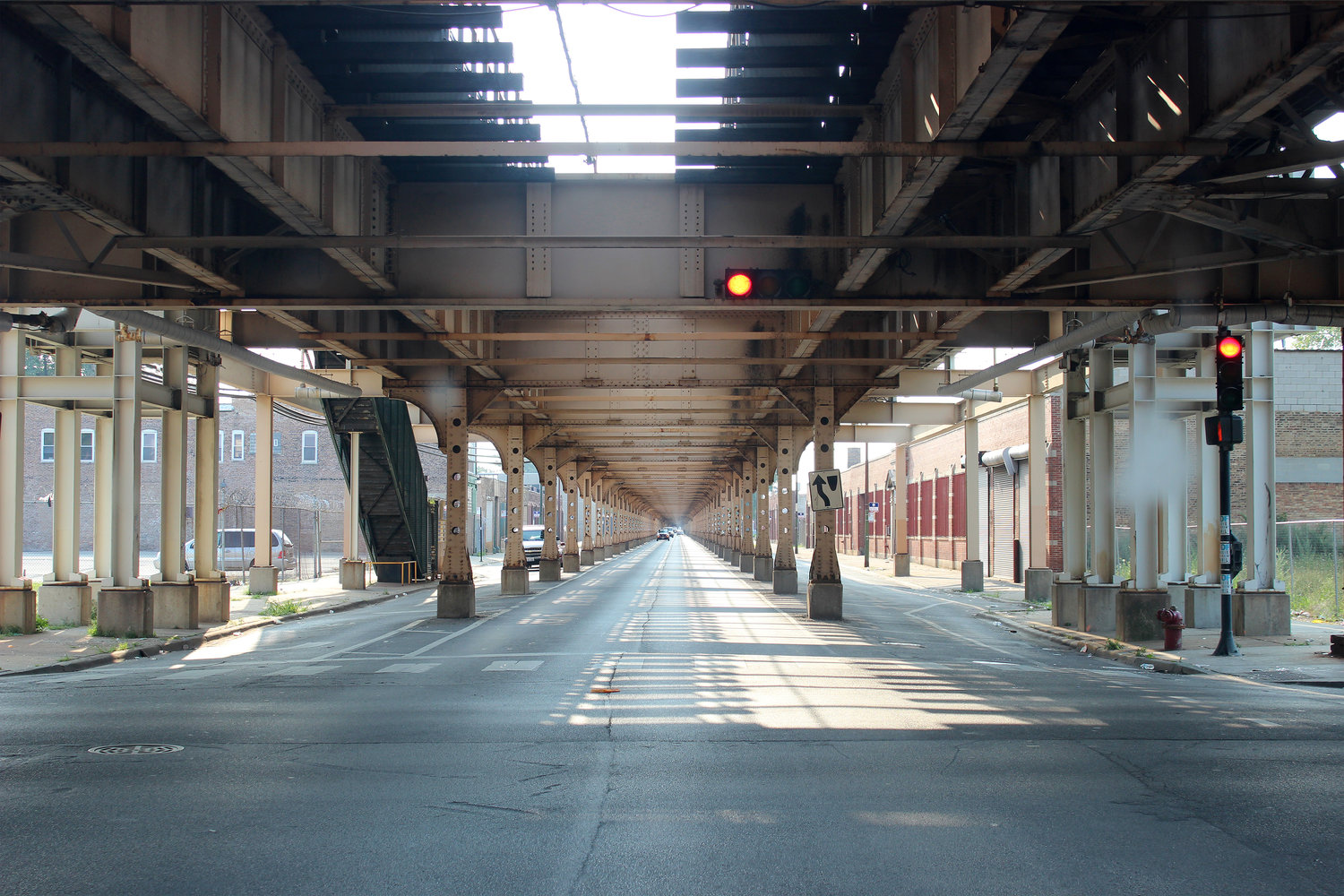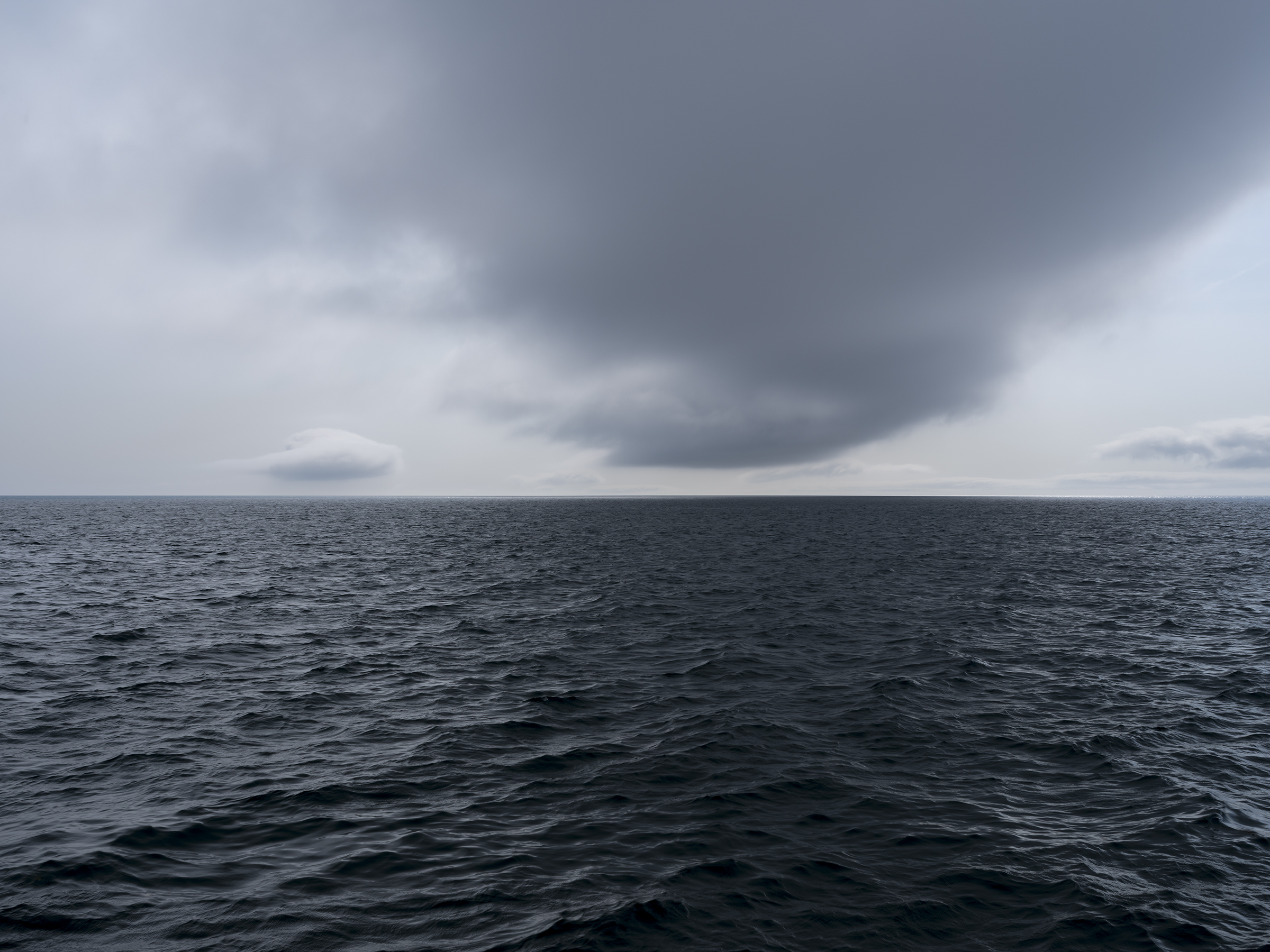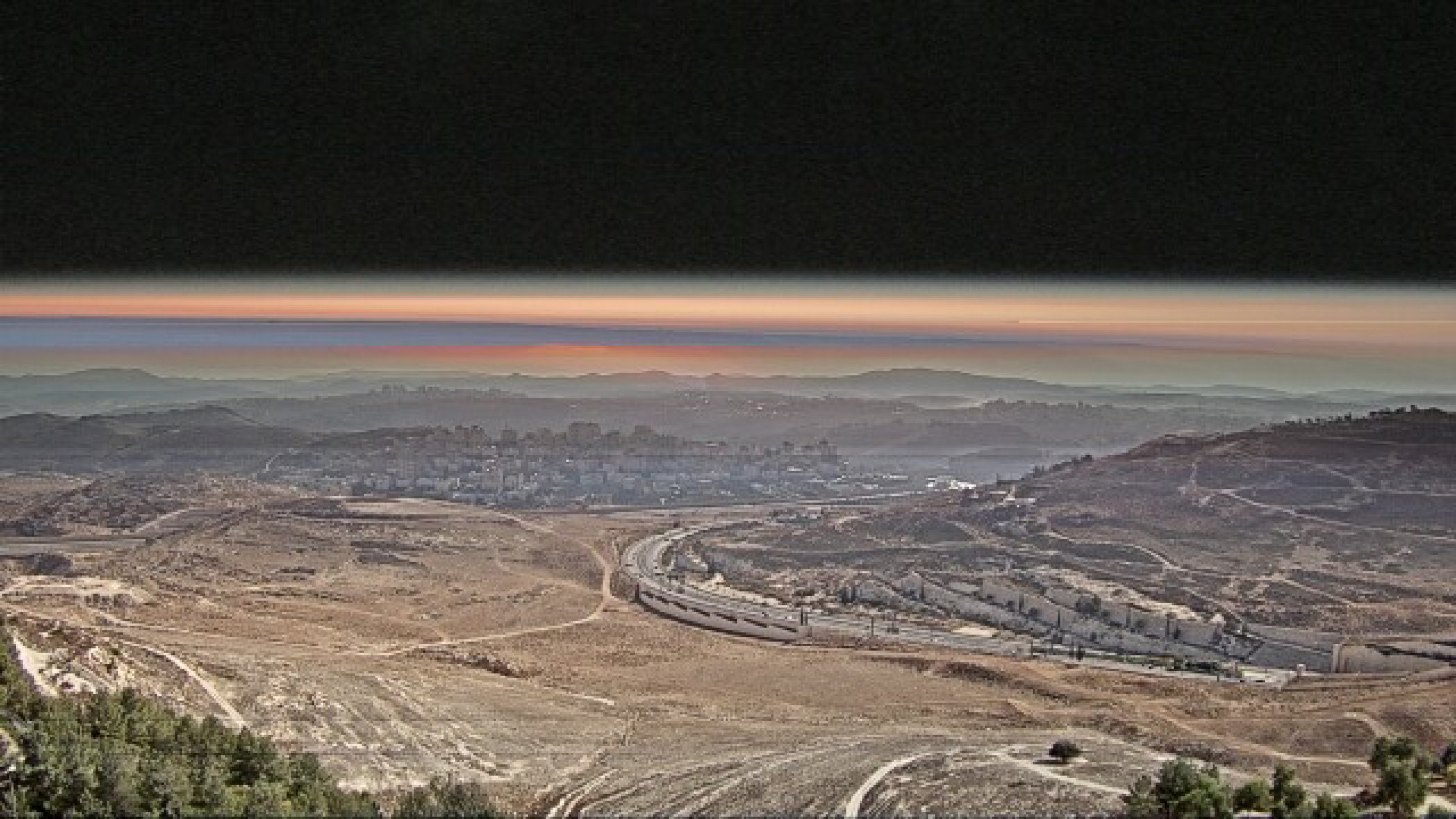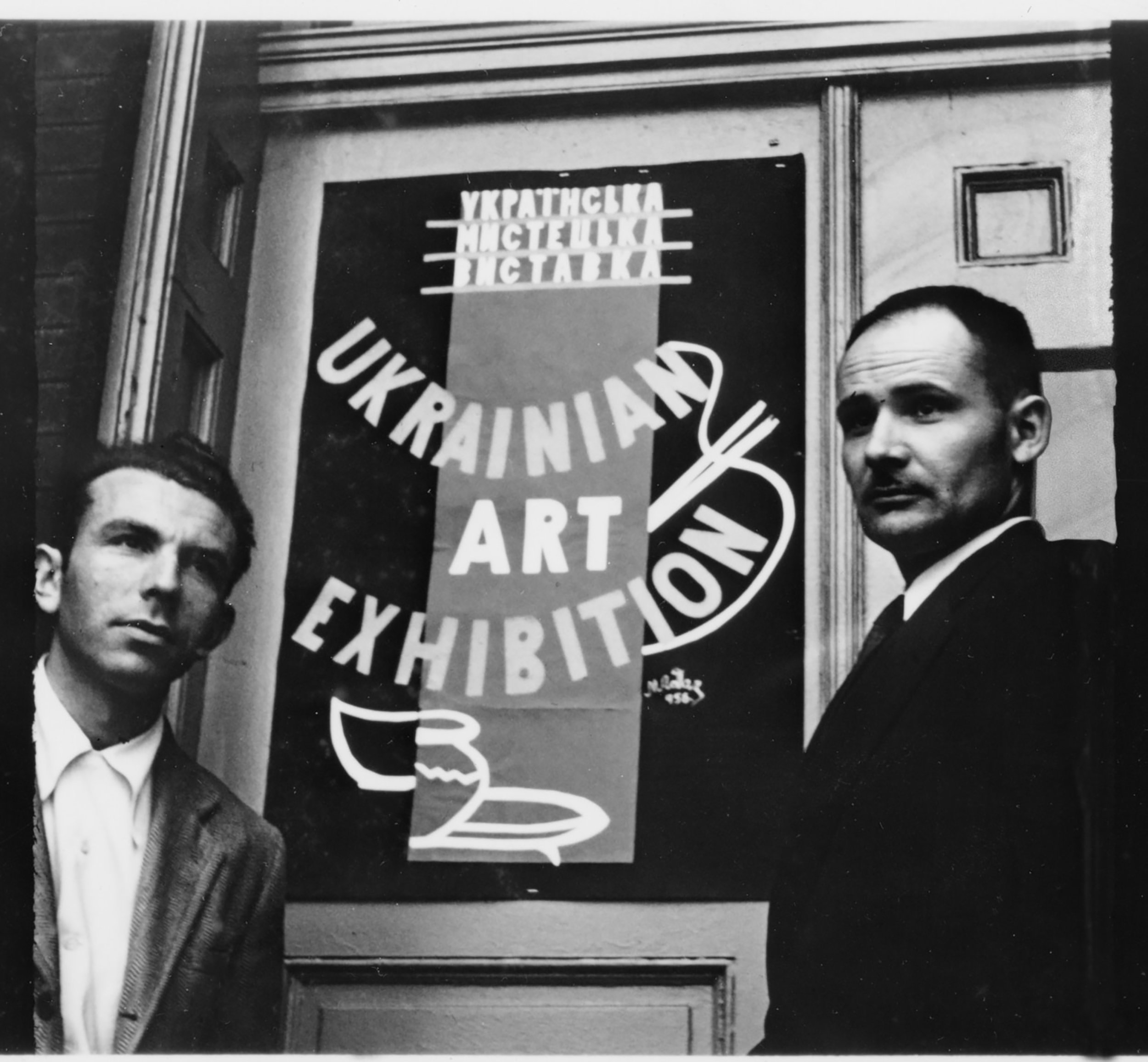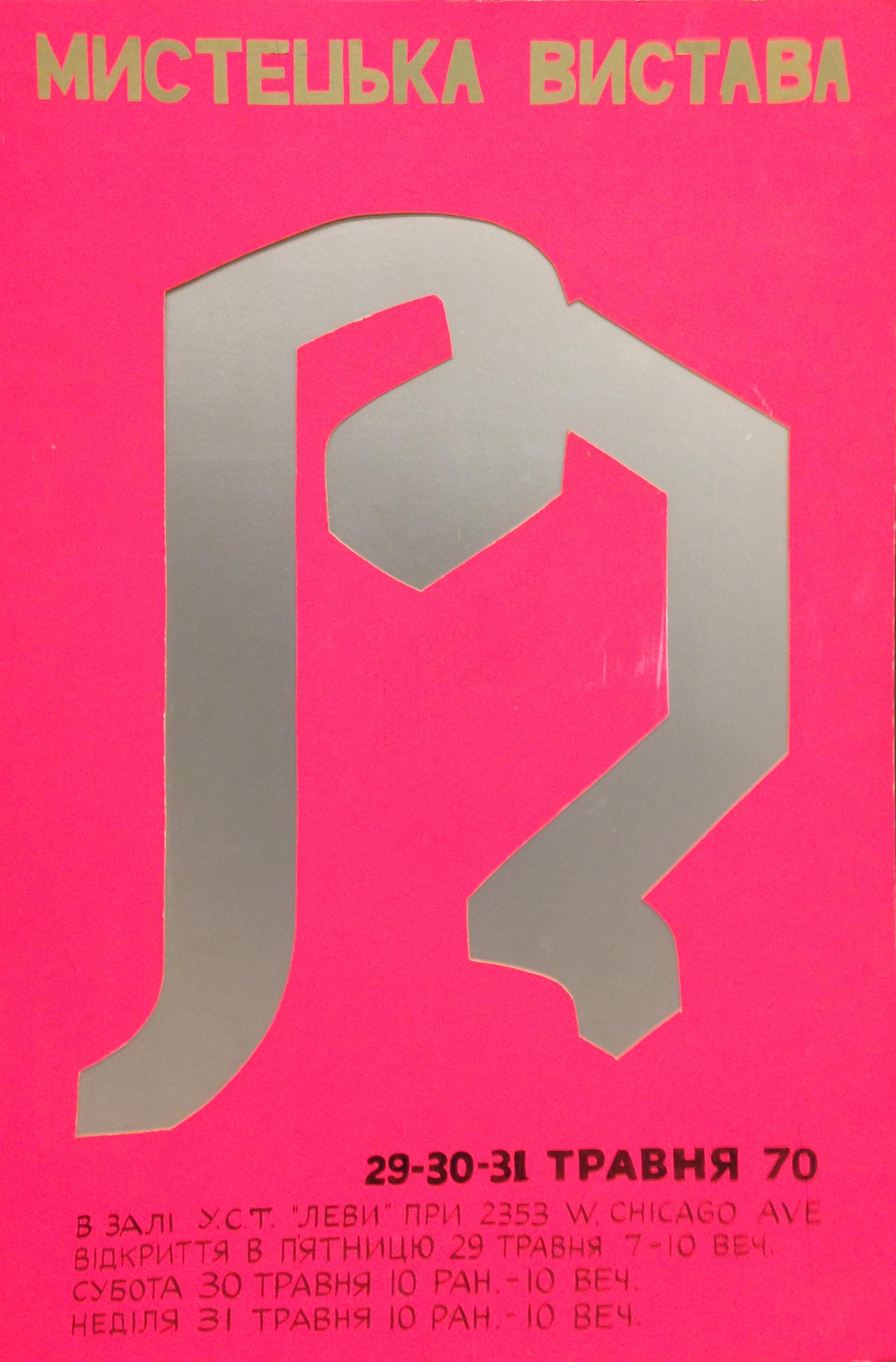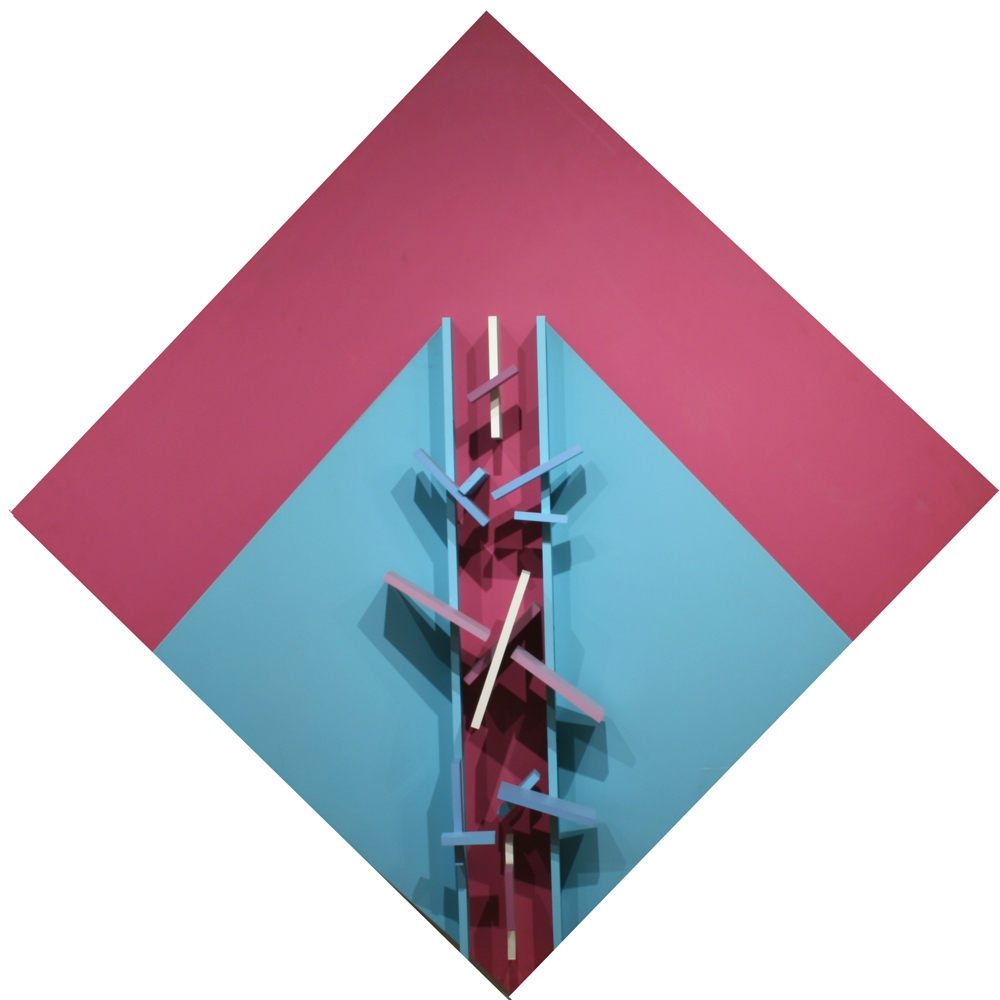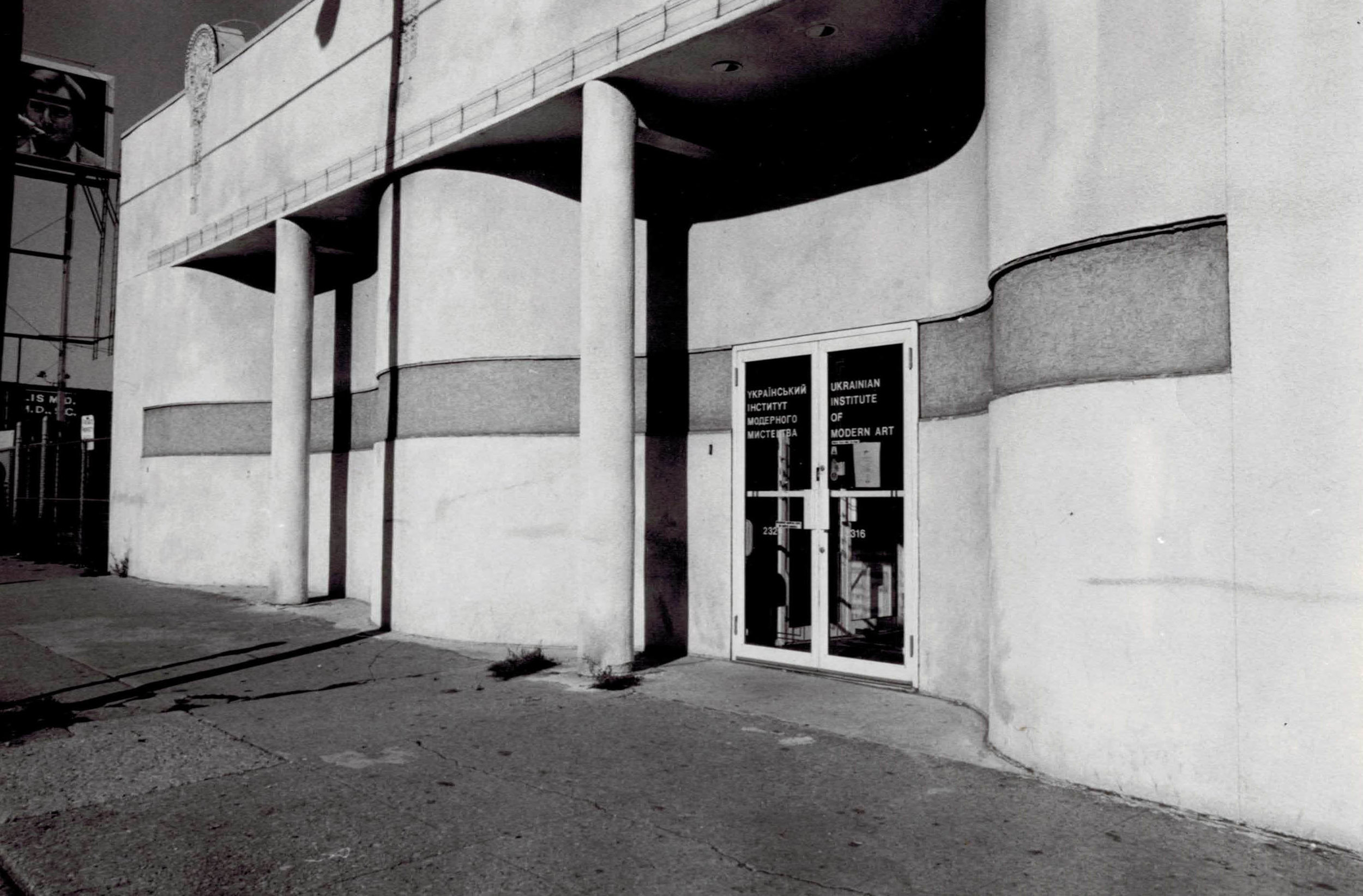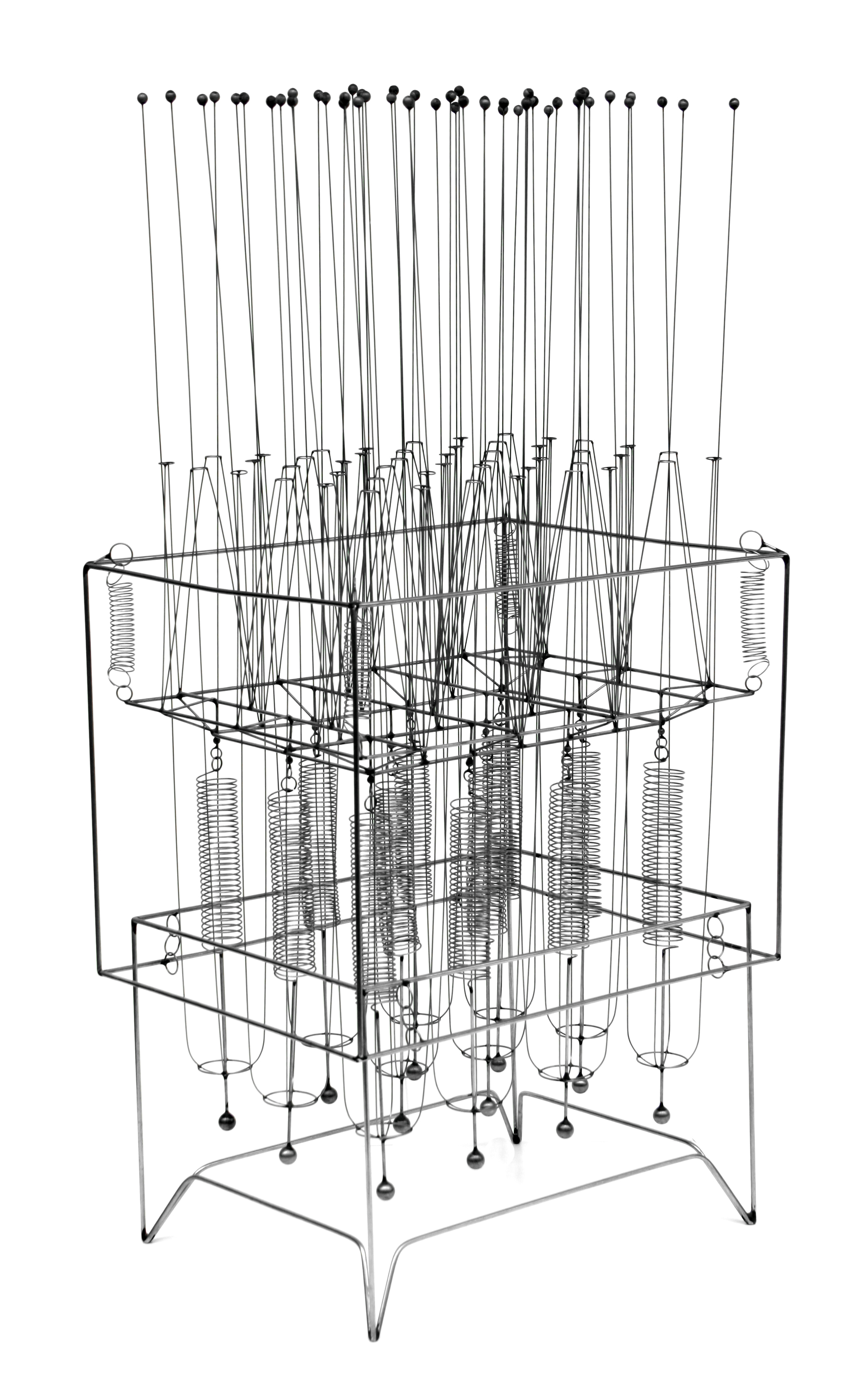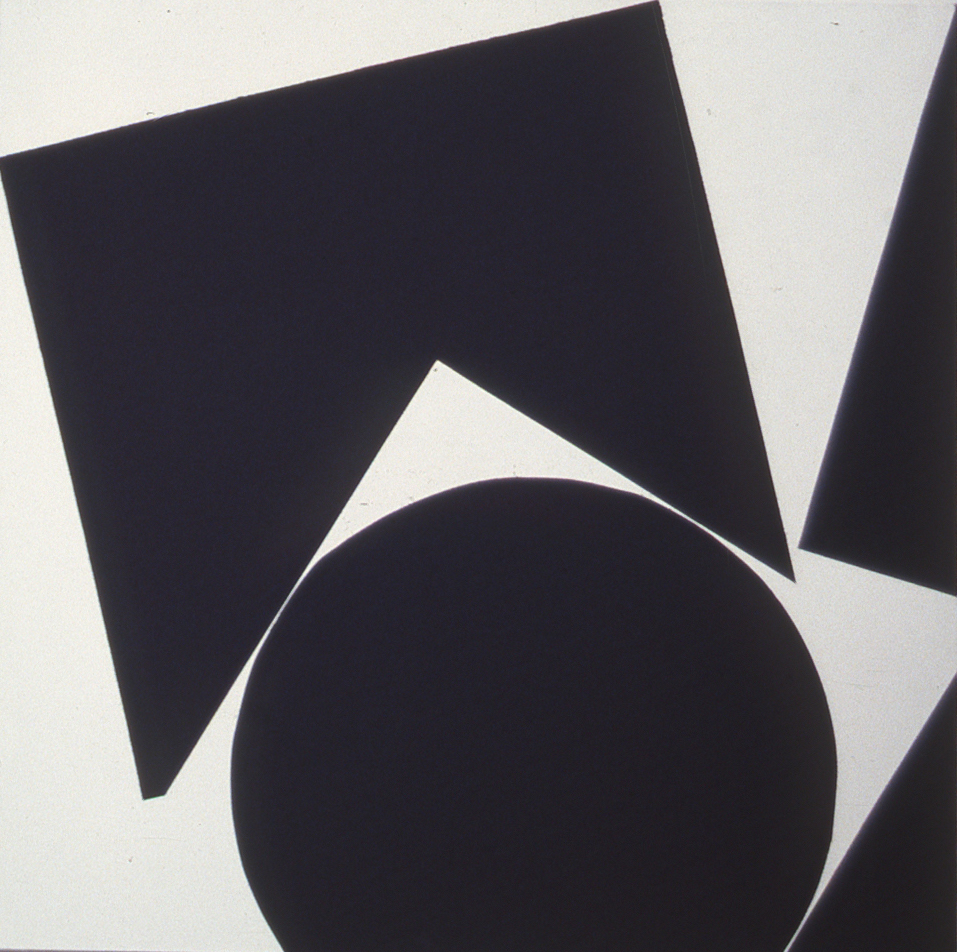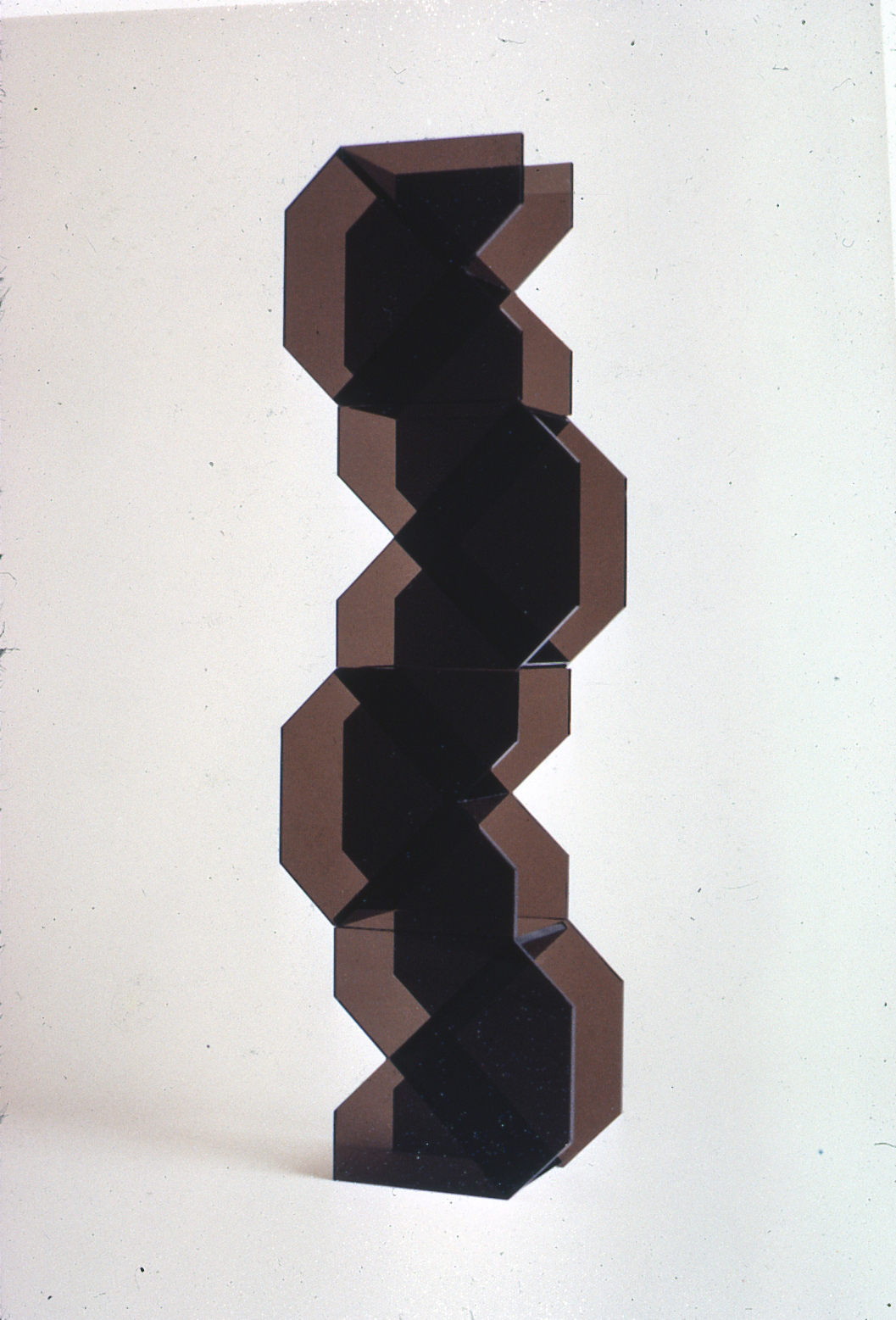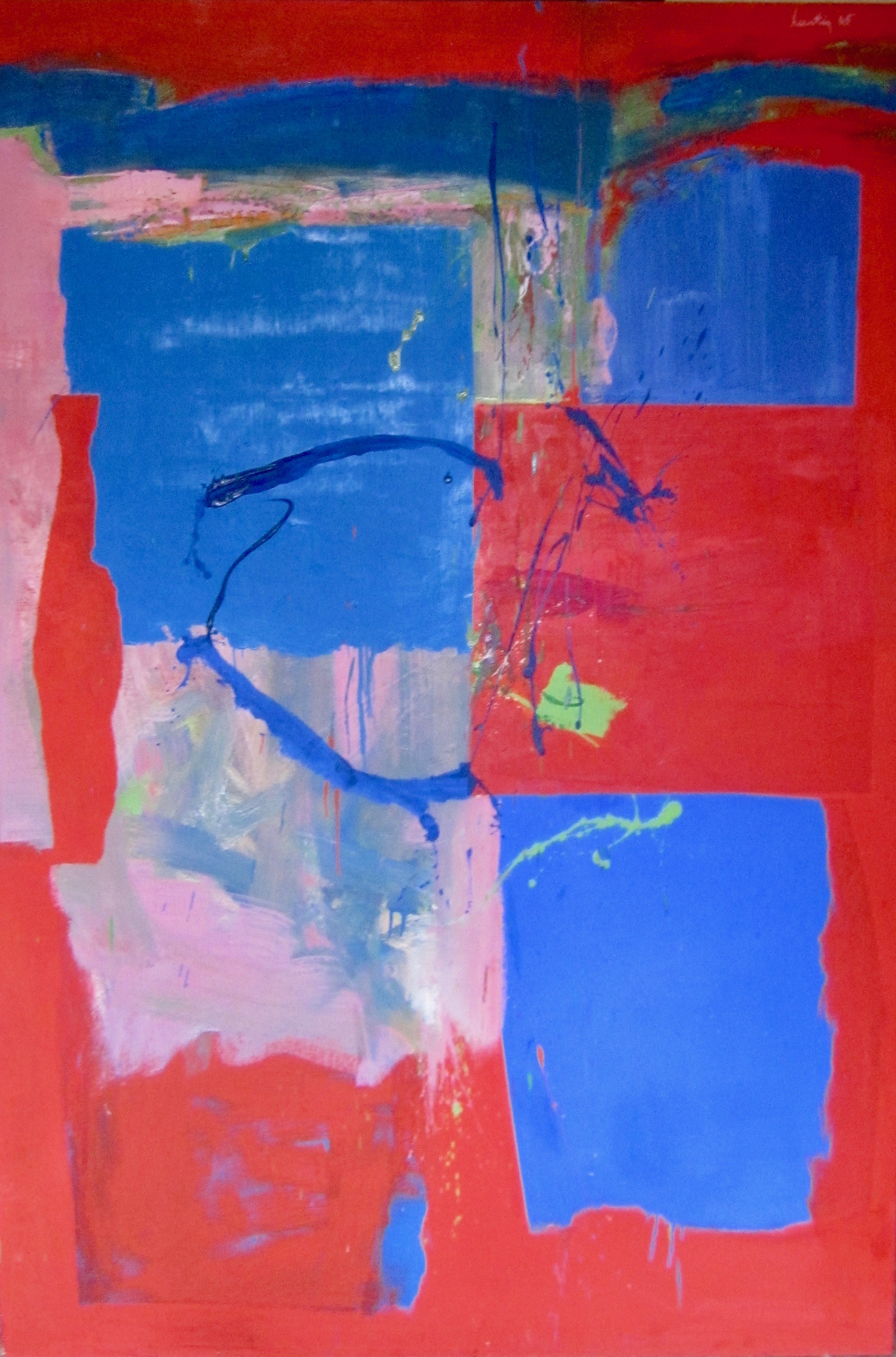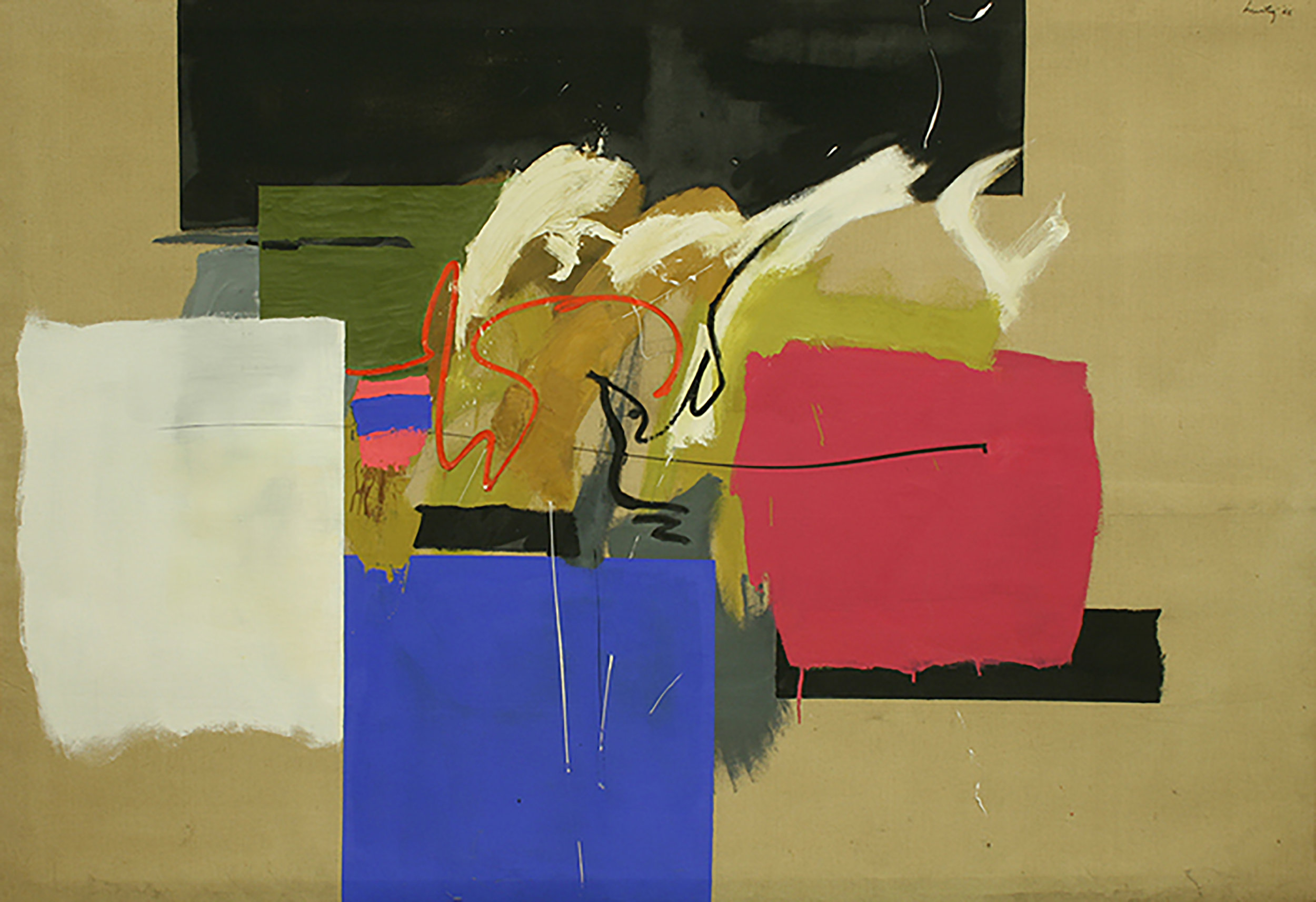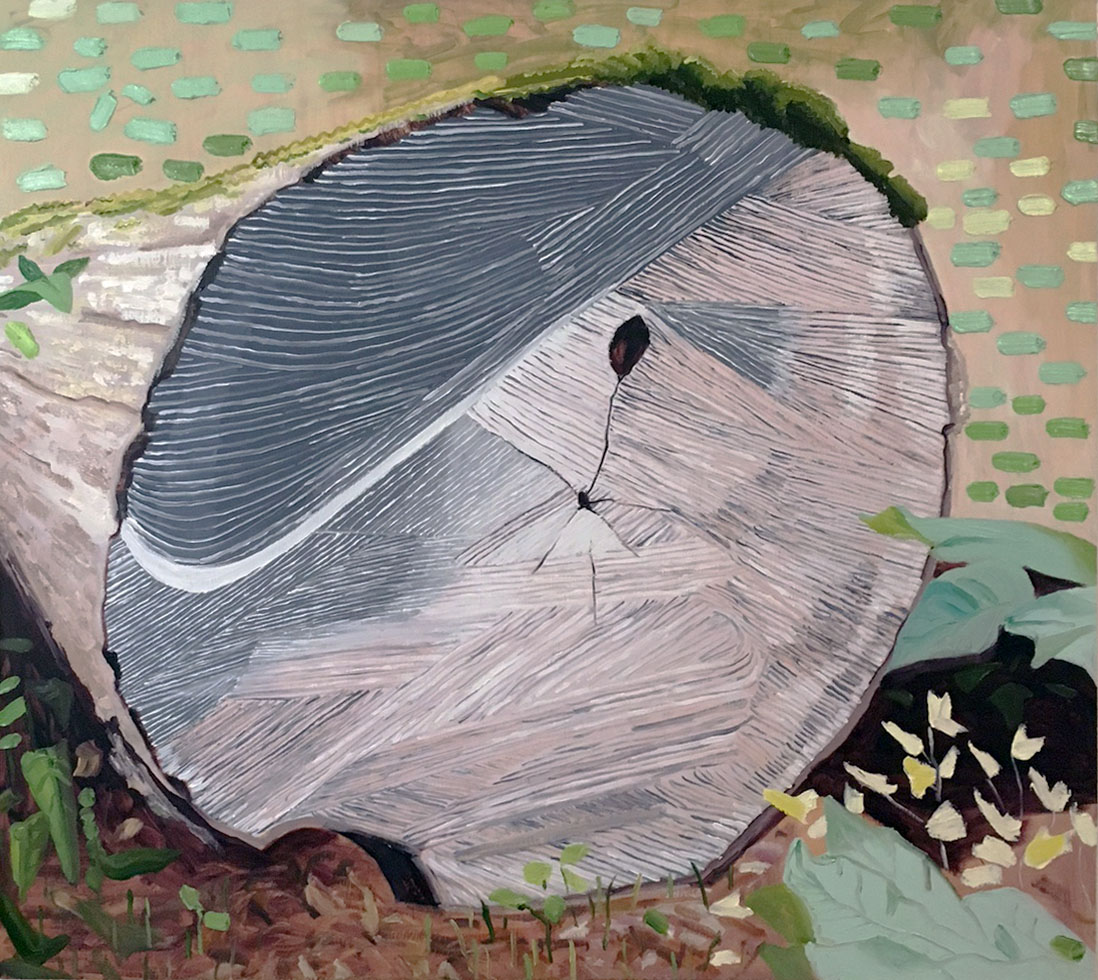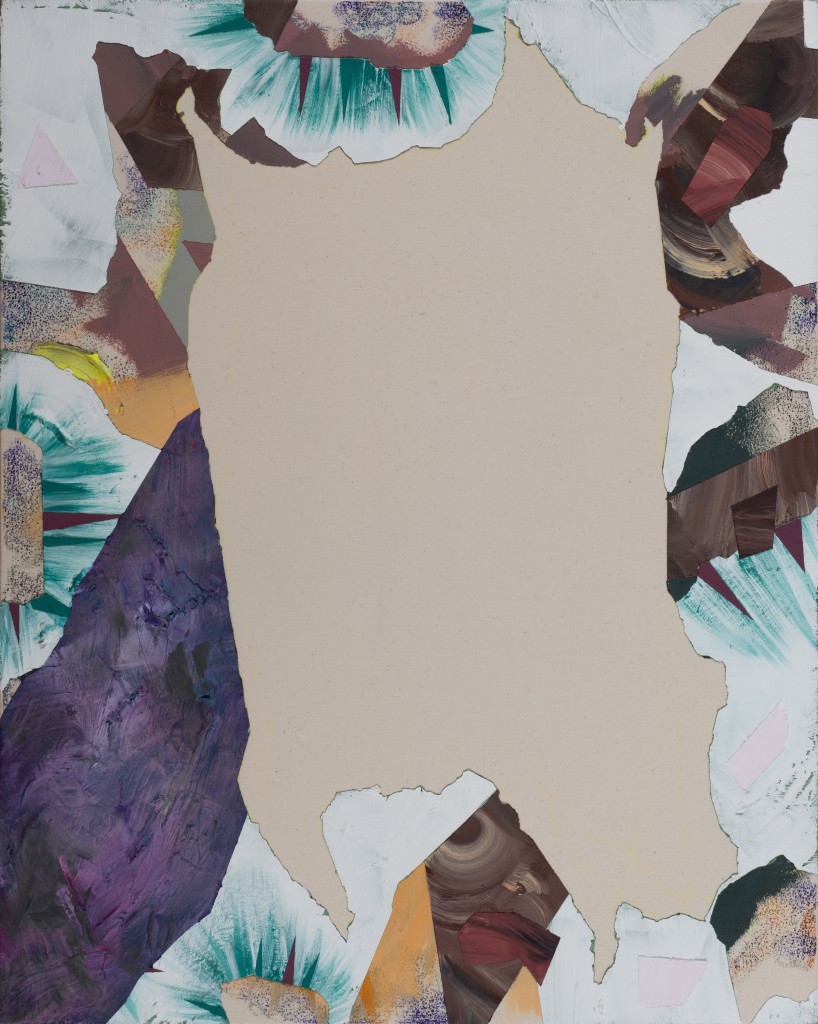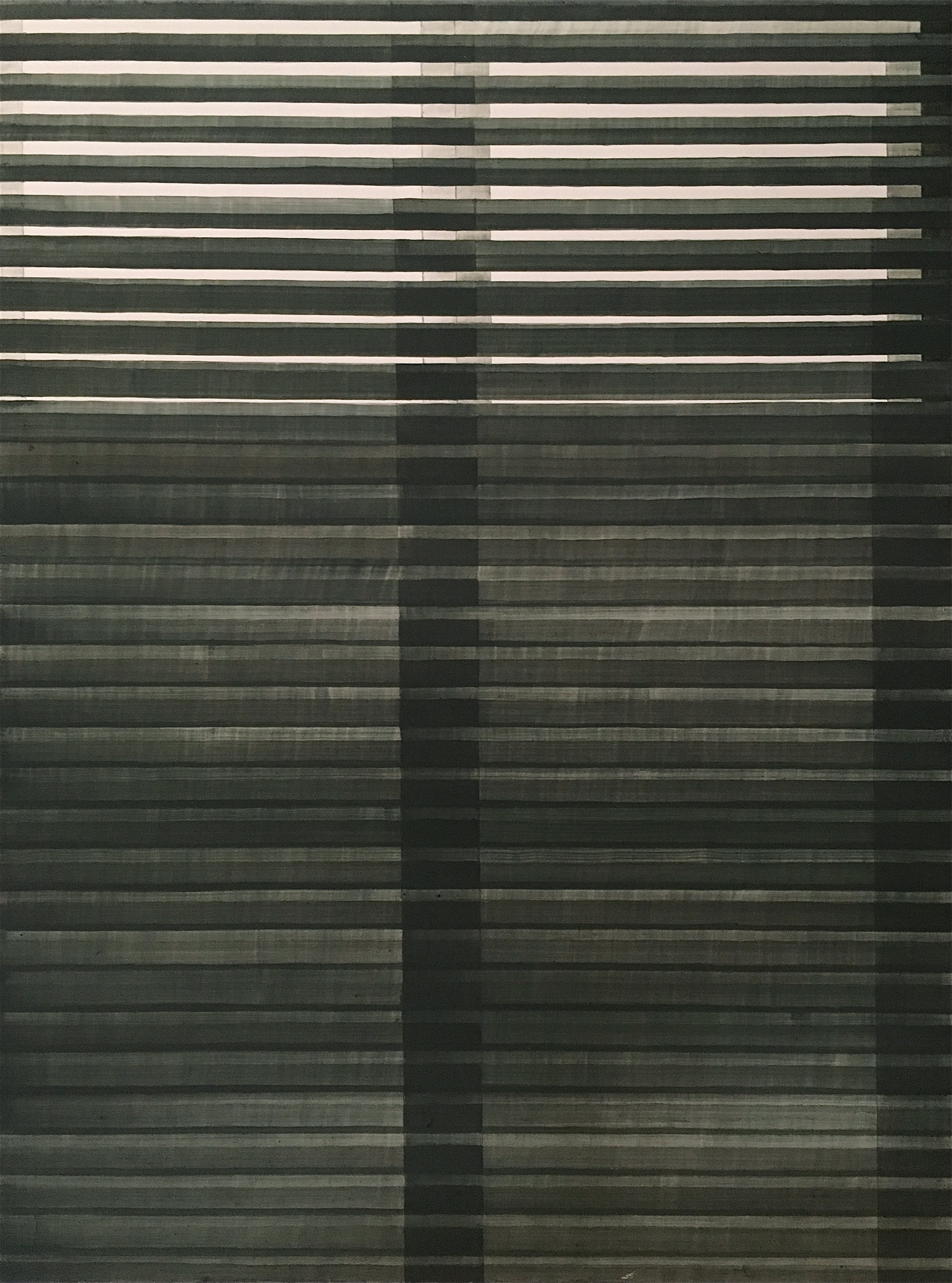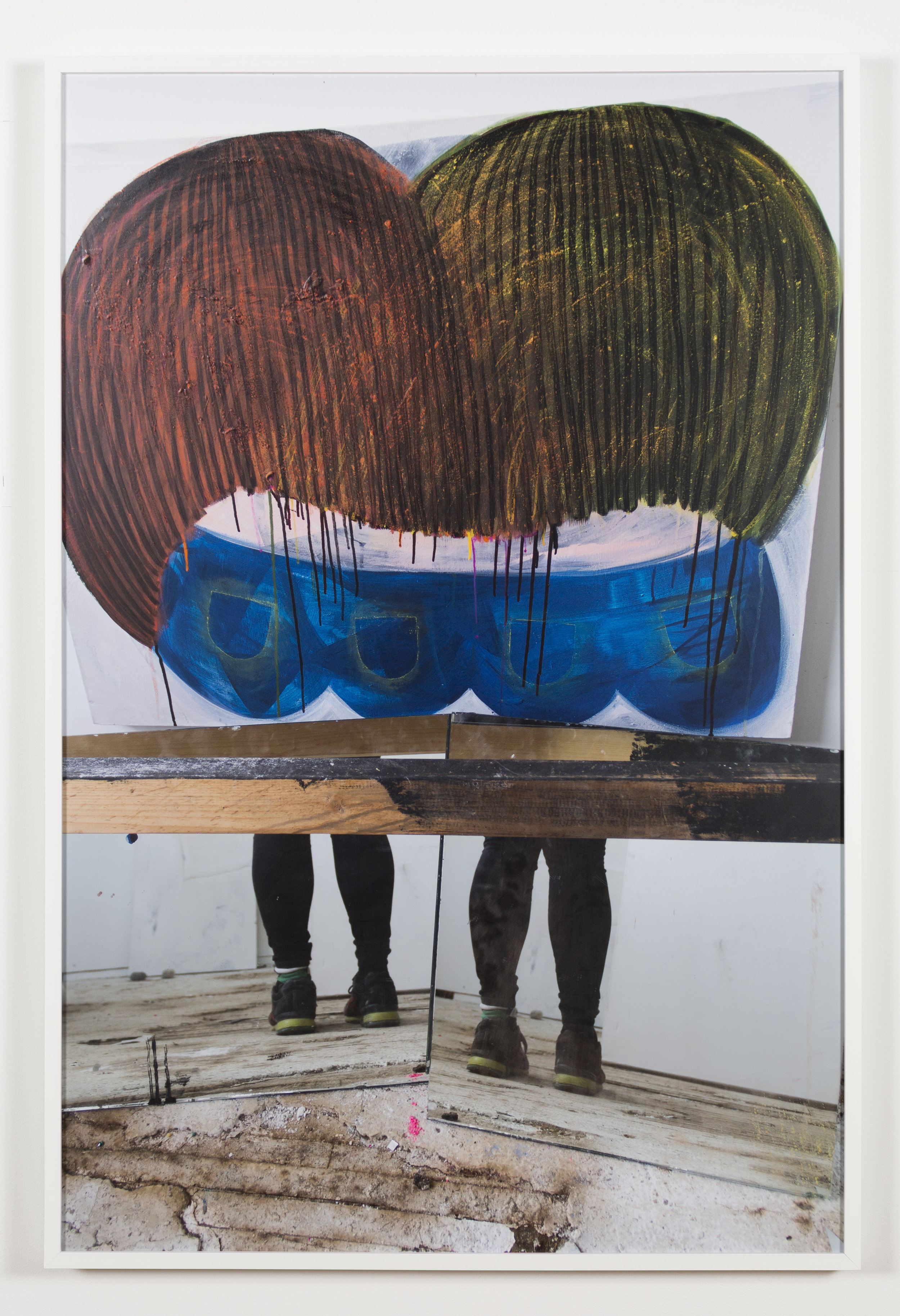Reinterpreting Religion
Curated by Lauren Leving
In many religions worldwide, especially within the most conservative sects, women are seen as second-class citizens. To be male means to hold the power. There is no denying the progress that comes with time, but contemporary interpretation of religion is still drastically lacking in regards to gender equality. Reform institutions allow female rabbis, imams, and pastors, yet a female pope is not allowed. In 2015, the Rabbinical Council of America developed a policy forbidding the hiring of female rabbis in Orthodox institutions and the Church of Jesus Christ of Latter-day Saints refuses to ordain women. Women, both those in leadership roles and worshippers, are often silenced in their own religious institutions—spaces which, in theory, are meant to be welcoming, and provide solace to those who seek it.
Reinterpreting Religion is a group exhibition featuring seven artists from the U.S., the U.K., and Italy including: Giulia Bianchi (Milan, IT), Sarah Maple (Sussex, UK), Yvette Mayorga (Chicago), Roni Packer (Chicago), Lakshmi Ramgopal (Chicago), Kristine Stolakis (San Francisco), and Rhonda Wheatley (Chicago). These artists employ photography, installation, painting, sculpture, and video to examine the nuances of spirituality. Their bodies of work highlight the ways feminism, religion, and perspectives shaped by life experiences coalesce to cultivate individualized systems of belief that move away from stringent guidelines outlined by the conservative structures of worship. Raising questions of ownership in regards to religious practices, the artists in Reinterpreting Religion use their artwork to reclaim power against unjust systems, not just for themselves but also for the subjects depicted in their work and for their audiences.
Religion does not lie on a single plane. It is layered; each congregant has ownership over her perspective. Rejecting blanket statements and cultural stereotypes, this exhibit showcases differing feminist interpretations of contemporary religion and spirituality. Reinterpreting Religion highlights the ability to pick and choose fragments of religion; each artist creates her own way of worship, forming an intersectional spirituality that includes multiple viewpoints and cultural practices that stay true to one’s self and set of beliefs. This exhibition brings to the forefront opinions typically ignored in conservative institutions and encourages viewers to stop relying on tradition, be receptive of new schools of thought, and learn to be unafraid of otherness.
Increment
Barbara Cooper, Shona Macdonald, Yoonshin Park
November 30, 2018 — January 27, 2019
Increment, at its simplest level, suggests moving forward in small, compartmentalized steps. Progress may appear slow, deliberate, conscientious, or gradual, but at its foundation lays the notion of measured change. This exhibit focuses on the work of three artists intent on drawing our attention to areas often overlooked or minimized in a world where reaching the end product directly prevails. Cooper explores the tension between nature and industry as a site of reconciliation; Macdonald ponders dislocation and "our transient and fragile hold on earth" through landscapes; and Park embraces the condition of not belonging as an opportunity for growth. All share an interest in the ensuing transformation.
Curated by Adrienne Kochman
Contemporary Ukrainian Graphics at the Turn of the XX/XXI Century
ON VIEW 10/12-12/9, 2018
OPENING RECEPTION: 10/12, 6-9PM
During the Soviet period, graphics secondary status to painting as a platform for disseminating official ideology granted it a measure of flexibility. Paid less attention by state censors, artists were able to pursue personal creative endeavors, explore formal artistic issues, and introduce new and challenging techniques - ultimately expanding graphics as a medium in its own right. The collapse of the Soviet Union and state-controlled art opened greater opportunities for artists, leading graphics to become one the most popular and highly respected art forms in Ukraine.
The exhibit highlights the progress, innovation and character shaping graphic art over the last 40 years. Featuring the work of 32 of the country's most acclaimed artists, the exhibition focuses primarily on the three major graphic centers of Kyiv, Lviv and Kharkiv, as well as paying heed to smaller communities of graphic production. Urbanization, the condition of the urban individual, modernity, and the decorative are some of the pictured themes, just as other works demonstate artist's engagement with newfound technical demands.
The works of the following artists are included: Oleksandr Aksinin, Kostyantyn Antyukhin, Kateryna Bruievych, Alisa Gots, Valeriy Demianyshyn, Oleg Denysenko, Sergiy Ivanov, Kostyantyn Kalinovych, Iryna Kalenyk, Yaroslav Kachmar, Taras Kobliuk, Oleksiy Koval, Vitalik Kravec, Mikhail Krasnyk, Olena Kudinova, Olha Kuzyura, Vitaliy Kulikov, Pavel Makov, Natalia Myronenko, Bohdan Pylypushko, Roman Romanyshyn, Nina Savenko, Yuriy Savter, Serhiy Savchenko, Vasyl Savchenko, Bohdan Soroka, Oksana Stratiychuk, Anna Khodkova, Serhiy Hrapov, Yuriy Charyshnikov, Albina Yaloza, Kristina Yarosh.
The exhibit is funded by the Ministry of Foreign Affairs of Ukraine, Ukrainian Consulate of Chicago and Sculpture Guild of Ukraine.
Guest Curator: Kateryna Pidhayna
Borders
ON VIEW FROM 10/5-11/25
OPENING RECEPTION: 10/5, 6-9PM
Borders are complicated and multi-layered issues. They define relationships of all kinds: political, economic, national, personal, emotional, spiritual. They delineate neighborhoods, countries, continents as well as marriages, friendships, and contracts. Domchenko writes, "as a child of immigrants, borders have always been important to me. Where we live, where we work, where we play, all define us as individuals and communities. Over the years, borders have and are important markers."
This exhibit presents images of landscapes that unite and define individuals. Whether they are specific in time and place or general in elements and geography, the landscape functions as both home and future, distance and past. The borders presented in these images help create and define the worlds presented. The four artists in this exhibit--Suzette Bross, Susan Collins, Yvette Kaiser Smith, and Lincoln Schatz--all use the visual language of landscapes to present their own visions.
Curated by Natalie Domchenko
Lions: Founding Years of the Ukrainian Institute of Modern Art
August 3–September 30, 2018
August 3–September 30, 2018
Over the 45 years of the Ukrainian Institute of Modern Art’s existence, many exhibitions have been mounted featuring artworks from the museum’s artist founders. However, the artworks in the collection only tell a part of the story. In LIONS: Founding Years of UIMA in Chicago, artworks by the museum’s Ukrainian emigre founders are supplemented with selections from UIMA’s extensive collection of ephemera, including vintage posters, archival photographs, video interviews with founding members, and early notes, sketches, and letters. These items from the Museum’s archive have never before been publicly displayed. LIONS aims to showcase the unique spirit of UIMA’s founders, which continues to contribute to the character of the Ukrainian Village neighborhood and Chicago’s art history at large. Alongside the innovations, the excitement, and the artistic endeavors, LIONS also addresses the trials that accompany being a visible immigrant community in the United States. The items in the archive are over 45 years old, but the discussions of immigrant identity and heritage are just as resonant today.
Co-curated by Stanislav Grezdo and Robin Dluzen.
LIONS is funded by the Terra Foundation for American Art and The Richard H. Driehaus Foundation.
Martin Hurtig: A Retrospective
Martin Hurtig began his professional training at the Institute of Design at the Illinois Institute of Technology in Chicago, where he received his bachelor of science degree in 1952. In 1955, he studied at the Atelier 17 in Paris. In 1957, Hurtig received a master’s degree, also from the Institute of Design in Chicago. Hurtig has presented his works extensively, including national exhibitions at the Detroit Institute of Arts; the Portland Museum of Art, Maine; and the Honolulu Academy of Arts, Hawaii. He has also exhibited on the international stage, including shows at the Bibliothèque Nationale, Paris, France, and Osaka Triennial, Osaka, Japan. He received numerous commissions for his sculptural murals, including from the Waukegan
Public Library, Waukegan, Illinois; the National Republic Bank, Chicago; and a stained glass window and wall mural at the Union Church of Lake Bluff, Illinois. He also curated a number of exhibitions, including Sight/Insight at the Suburban Fine Arts Center, Highland Park, Illinois, and Chicago-Paris Abstract Affinities at the Ukrainian Institute of Modern Art, Chicago. In the late 1960s and early ’70s, Hurtig struggled against the dominance of “Imagism” in Chicago, forming, with Lawrence (Larry) Salomon, the “Five,” a group committed primarily to abstraction, which also included the artists Ted Argeropolos, Larry Booth, and Vera Klement.
In an essay on Hurtig’s one person show Enigmatic Relation at the Columbia College Chicago Art Gallery, art historian Sue Taylor thoughtfully observed: “Poignant and beautiful, Hurtig’s images are like dancers in an existential ballet. They spring from a rigorous and fully formed aesthetic, and draw their power from a profoundly empathic human spirit.”
Corey Postiglione, a Chicago-based artist, writer and Professor Emeritus of Art History and Critical Theory at Columbia College Chicago, wrote: “Hurtig has maintained a certain aesthetic position that runs through his entire oeuvre. In fact, he has adhered to two main concepts over the last 50 years of art making: his unflagging commitment to abstraction, and his need to speak visually in a non-regional voice. Art, for Hurtig, was its own domain, to be appreciated on its own terms, in its own language of the visual. His work from the beginning of his career embraced an art that operated from a more formal or conceptual base.”
Nothing Is Ours But Time
February 9th - March 25, 2018
Opening reception: February 9th, 6pm
February 9th - March 25, 2018
The act of painting is an attempt to capture a moment, to preserve a gesture or an image in a suspension of pigment and oil. The artists in “Nothing is Ours But Time” use painting as a way to mark time and to contain it. Their work is anxiously focused on capturing fleeting everyday moments. Selina Trepp uses and reuses only the materials currently present in her studio to make work. Ultimately, she will leave behind little more than digital images for her descendants to contend with. Mel Cook is a modern-day Vanitas painter, reminding the viewer of his or her own mortality. Karen Azarnia’s triptych of paintings documents a handprint on a window that disappeared over the course of an afternoon drive. Time still slips through our fingers, but every moment spent in an act of creation is one that we can count as ours.
Curated by Gwendolyn Zabicki
Featuring artists Karen Azarnia, Mel Cook, Jenn Dierdorf, Christine Han, Matthew Metzger, Melody Saraniti, Daniel Schmid, Selina Trepp, Erin Washington
Image: Melody Saraniti, it never really lands, 2018

